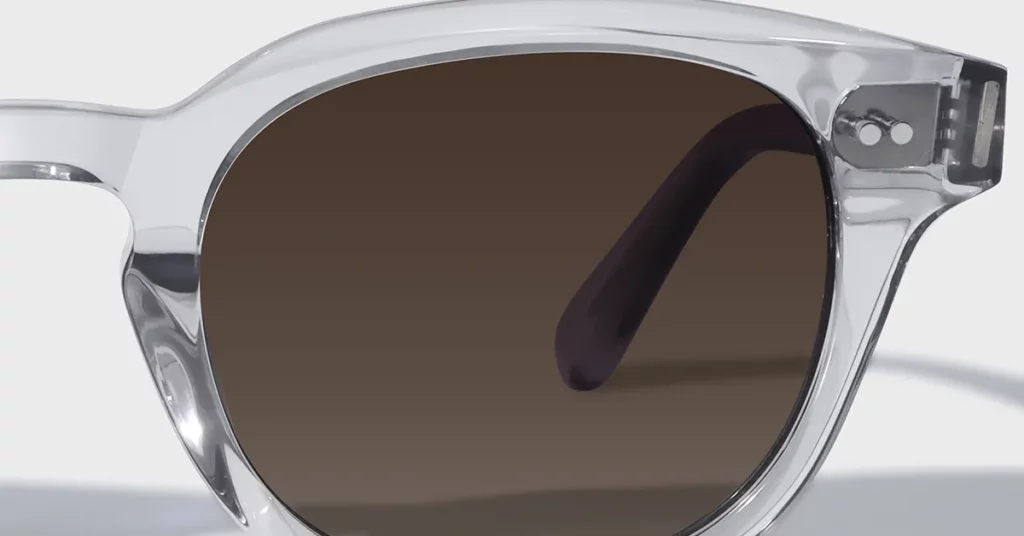Sourcing certified recycled or bio-acetate requires balancing distinct trade-offs. Recycled acetate, like Eastman Acetate Renew, offers a circular solution using waste but relies on mass balance certification (ISCC PLUS). Bio-acetate, like Mazzucchelli M49, provides higher renewable content (68%) and biodegradability but comes at a 15-20% cost premium. Your choice depends on whether your brand story prioritizes waste reduction or fossil fuel independence.
The Material Matrix: Recycled vs. Bio-Acetate
Your choice between recycled and bio-acetate is a strategic decision that defines your brand’s sustainability narrative and impacts your entire supply chain. You must evaluate these materials not just on their eco-credentials, but on their performance, cost, and marketing power.
| Attribute | Recycled Acetate (e.g., Eastman Acetate Renew) | Bio-Acetate (e.g., Mazzucchelli M49) |
| Core Value Prop | Circularity: Diverts existing plastic waste from landfills. | Renewability: Replaces fossil fuels with plant-based resources. |
| Key Metric | Up to 40% certified recycled content combined with 60% bio-based pulp. | Up to 68% total bio-based content (pulp + plasticizer). |
| Primary Tech | Molecular (Chemical) Recycling: Breaks down waste to its basic molecules. | Bio-Based Plasticizers: Replaces petroleum plasticizers with vegetable-origin alternatives. |
| End-of-Life | Infinitely recyclable back into virgin-quality acetate via molecular recycling. | Biodegradable under industrial composting conditions (ISO 14855). |
| Key Certification | ISCC PLUS (Mass Balance) to verify recycled content chain of custody. | ASTM D6866 (Carbon-14 testing) to verify bio-based content percentage. |
| Forestry Cert. | Uses FSC/PEFC certified pulp for the non-recycled portion. | Uses FSC/PEFC certified pulp for the cellulose base. |
| Hypoallergenic | Performance is identical to traditional acetate. | Superior hypoallergenic properties due to the absence of phthalates. |
| Cost Premium | Typically 10-20% over virgin acetate. | Typically 15-20% over virgin acetate. |
Evaluating Recycled Acetate for Your Premium Collection
Recycled acetate transforms waste streams into premium eyewear components. This process provides a powerful story of circularity, directly addressing consumer concerns about plastic pollution while maintaining the quality non-negotiable for premium brands.
The Technology: Molecular vs. Mechanical Recycling
Eastman’s Carbon Renewal Technology is a molecular recycling process that breaks down plastic waste into its fundamental molecules. These molecules are then used to create new cellulose acetate with properties identical to virgin material. This overcomes the limits of traditional mechanical recycling, which struggles with mixed colors and contaminants, leading to downcycling and quality degradation.
The Bottom Line: Molecular recycling enables true circularity, turning post-production and post-consumer waste back into high-performance material. This technology justifies a premium price point by delivering a verifiable environmental benefit without compromising the structural integrity or finish of your frames.
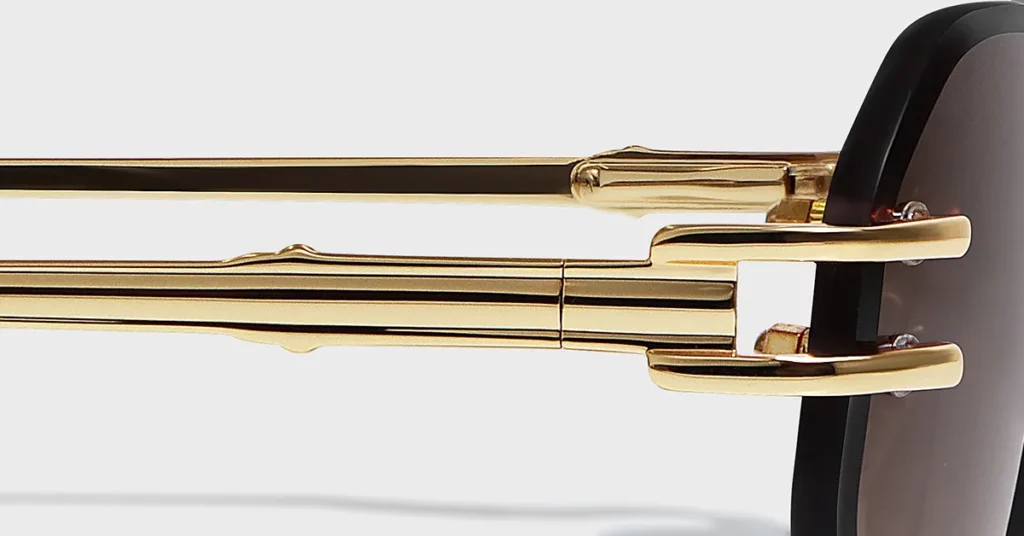
Deconstructing Acetate Renew: 60% Bio-Based, 40% Recycled
Eastman’s Acetate Renew formulation combines 60% bio-based cellulose from FSC or PEFC certified wood pulp with 40% certified recycled content. This composition maximizes both renewable resource use and waste diversion. The recycled portion is derived from hard-to-recycle plastics, including textiles and eyewear manufacturing scraps, via molecular recycling.
Best Practice: You must demand that suppliers provide detailed mass balance documentation for each batch. This is the only way to get the exact percentages of bio-based and recycled content, which is non-negotiable for making accurate marketing claims and building consumer trust.
Performance: Durability, Finish, and Color Integrity
Your customers expect perfection, and recycled acetate must deliver it. Extensive testing confirms that molecularly recycled acetate exhibits identical tensile strength and impact resistance to virgin materials. This means you can use your existing CNC machining, tumbling, and polishing parameters without any adjustment or risk to quality. Color integrity is also maintained, as the molecular process purges contaminants that cause inconsistencies.
Pro Tips: For any high-volume production, you must establish batch testing protocols with your supplier. This verifies color consistency and mechanical properties, protecting your brand from material variations that could compromise the uniformity of your collection.
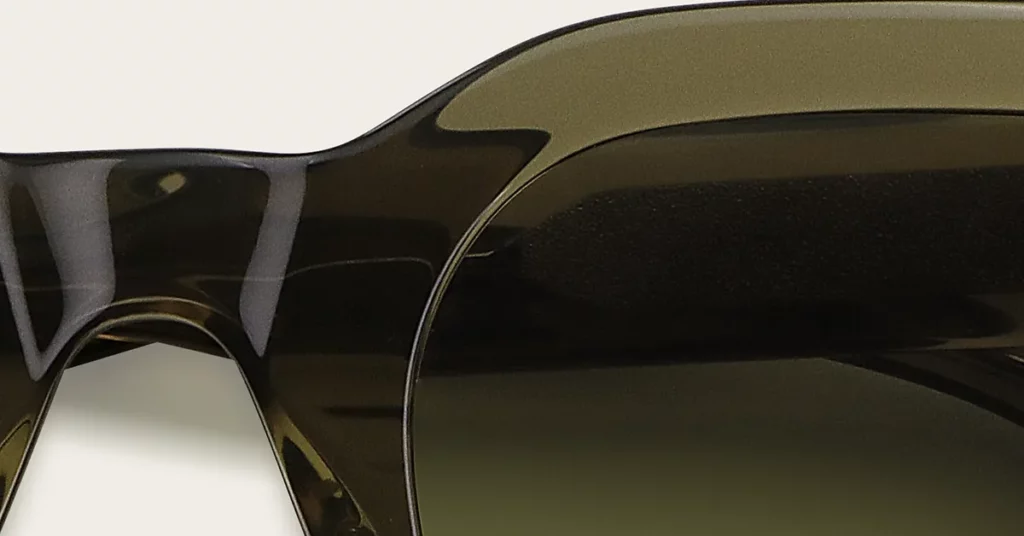
Evaluating Bio-Acetate as a Sustainable Alternative
Bio-acetate offers a different sustainability path, focusing on renewable feedstocks and enhanced biodegradability. Formulations like Mazzucchelli’s M49 reduce fossil fuel dependence and address end-of-life concerns, creating a compelling narrative for eco-conscious consumers.
The Science: How Bio-Based Plasticizers Work
Mazzucchelli’s M49 replaces traditional petroleum-based plasticizers with vegetable-origin alternatives. This is the key innovation that boosts the material’s total bio-based content from a baseline of ~42% to 68%, as verified by ASTM D6866 testing. This substitution is critical because it eliminates fossil fuel dependence for a key ingredient and removes phthalates, which can be a concern for some consumers.
Definition: Bio-based plasticizers are plant-derived compounds that give cellulose acetate its necessary flexibility and workability. Their use directly increases renewable content and improves biodegradability without sacrificing the performance characteristics of premium acetate.
Biodegradability: The Impact of ISO 14855 Standards
Bio-acetate’s biodegradability must be understood with precision. The ISO 14855 standard measures how a material breaks down under controlled industrial composting conditions. Mazzucchelli’s M49 achieves over 90% biodegradation within 115 days, far exceeding the standard. This is a powerful technical claim, but it comes with a responsibility.
Critical Warning: You must clearly communicate that “biodegradable” means disposal in an industrial composting facility, not a home compost bin or landfill. Failing to provide this context exposes your brand to accusations of greenwashing and misleads consumers about proper end-of-life handling.
Physical Properties & User Experience
Bio-acetate delivers a premium user experience. Its flexibility, weight, and surface finish are indistinguishable from traditional acetate, allowing for complex designs and a premium hand-feel. The primary user-facing benefit is its enhanced hypoallergenic properties, a direct result of replacing petroleum-based plasticizers and their associated phthalates.
For Example: A frame made from M49 will have the same weight and balance as a traditional acetate frame but offers a verifiable 68% renewable content and enhanced skin safety. This is a tangible benefit that your marketing can and should leverage.
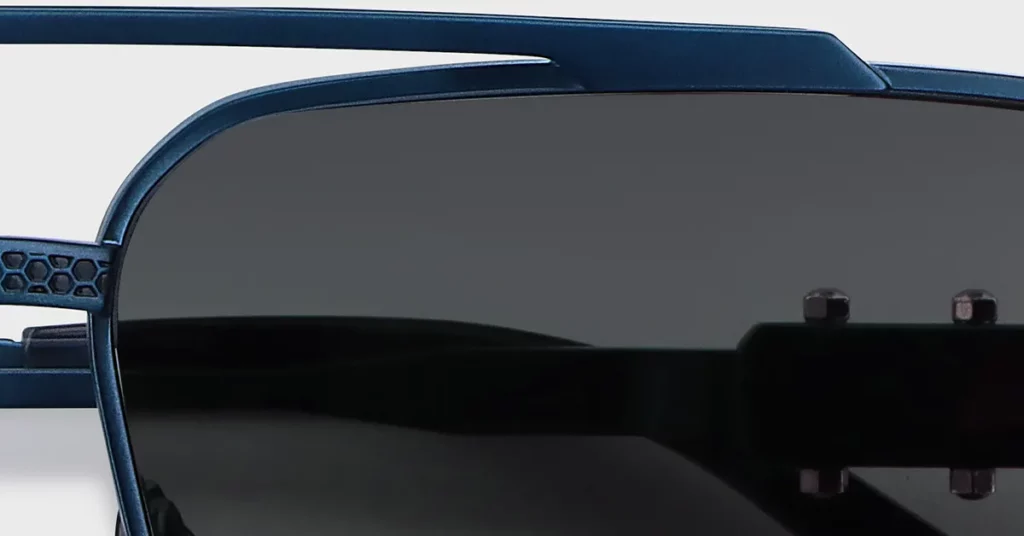
The Credibility Framework: Decoding Certifications
Certifications are not just logos; they are the bedrock of your brand’s credibility. Misunderstanding or misusing them is a fast path to losing consumer trust. You must master these systems to make defensible claims.
Unpacking ISCC PLUS & The Mass Balance Model
ISCC PLUS is the globally recognized certification for tracking circular and bio-based materials through complex supply chains. It operates on a mass balance model, which is an accounting method that tracks the quantity of sustainable material entering a production system and allocates it to a corresponding quantity of output.
This system is essential for acetate production, where sustainable and conventional feedstocks are often mixed in large-scale reactors. While the specific recycled molecules may not be in every single frame, the system guarantees that for every ton of recycled material a supplier buys, they can sell exactly one ton of ISCC PLUS certified product.
Key Metric: ISCC PLUS requires rigorous third-party audits to verify a company’s mass balance bookkeeping, ensuring that their sustainable output never exceeds their sustainable input. This is the mechanism that prevents over-claiming and protects the integrity of your marketing.

GRS vs. RCS: Choosing the Right Recycled Standard
For recycled content, you will encounter the Global Recycled Standard (GRS) and Recycled Content Standard (RCS). They serve different purposes, and you must choose the one that aligns with your strategic goals.
| Standard | Global Recycled Standard (GRS) | Recycled Content Standard (RCS) |
| Recycled Content | Minimum 20% required. | Minimum 5% required. |
| Scope | Holistic: Covers the full supply chain, including social criteria, environmental practices, and chemical restrictions. | Focused: Verifies the chain of custody and percentage of recycled material only. |
| Material Handling | Typically requires physical segregation of recycled and virgin materials. | May accept mass balance approaches under specific conditions. |
| Best Use Case | For brands seeking to make comprehensive sustainability claims that go beyond just recycled content. | For brands focused on making a specific, verifiable claim about recycled content percentage without the broader compliance overhead. |
Best Practice: Select GRS for a premium, holistic sustainability position that you can communicate across your brand. Choose RCS if your primary goal is a more focused, product-specific claim about recycled content, offering a more direct compliance pathway.
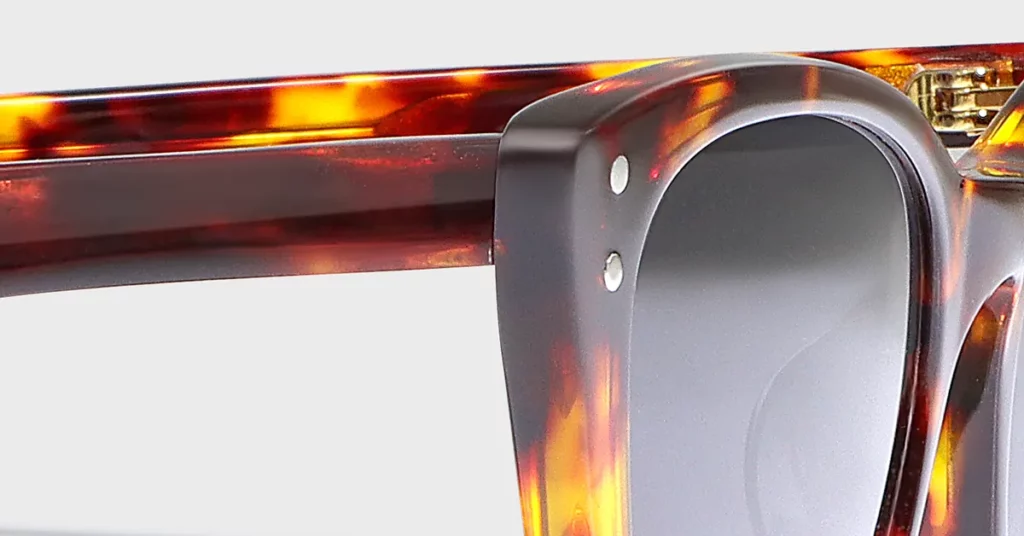
The Scaling Challenge: Mastering the Supply Chain
Sourcing sustainable acetates at scale introduces economic and logistical hurdles that can disrupt production if not managed proactively. Success requires a strategic approach to procurement and supplier management.
Cost Analysis: The Price Premium on Sustainable Acetates
You must budget for a price premium on sustainable materials. Expect certified acetates to cost 10-20% more than their virgin counterparts. This premium is not arbitrary; it covers the costs of feedstock collection, advanced recycling technologies, and rigorous certification audits. Bio-acetates like M49 are often at the higher end of this range due to specialized plasticizer sourcing and development.
Key Metric: Plan for a 10-20% material cost increase. This figure must be built into your product costing and pricing strategy from day one to protect your margins.
Mitigating Price Volatility and Securing Volume
The market for sustainable feedstock is volatile and supply is concentrated among a few key innovators like Eastman, Celanese, and Mazzucchelli. This creates risk. You must use strategic sourcing to protect your business.
- Secure Long-Term Contracts: Negotiate 2-3 year agreements with fixed pricing or defined escalation clauses. This provides cost predictability and secures your allocation.
- Diversify Suppliers: Where possible, qualify more than one supplier to reduce dependency and maintain competitive tension.
- Collaborate on Forecasting: Share your demand projections with your partners. This allows them to plan their production and ensures you have access to the volume you need, when you need it.
Critical Warning: The global supply of certified wood pulp and high-quality recycled feedstock is a significant bottleneck. Do not wait until you are ready to scale to address this. Secure your supply chain and build strategic partnerships well in advance of your production needs.
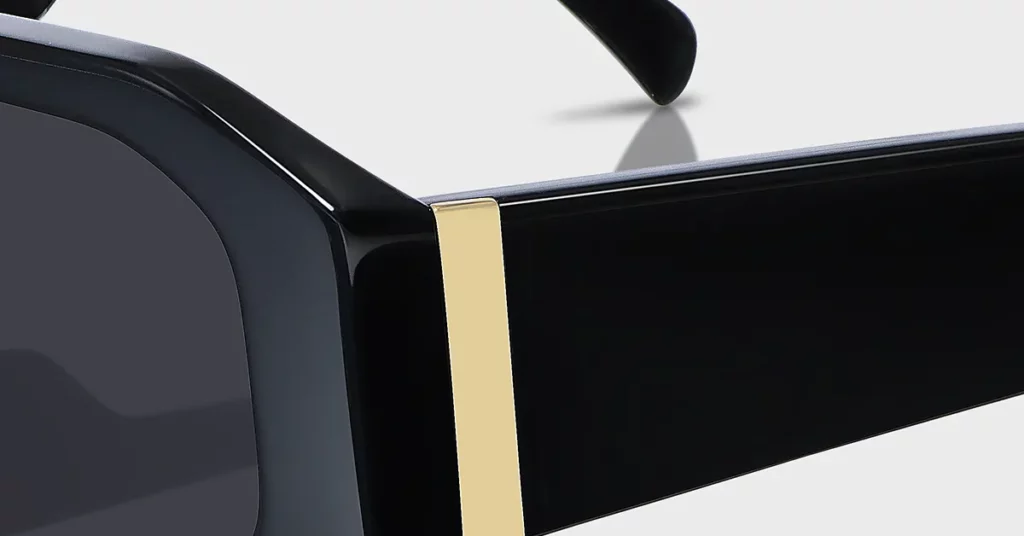
The Partnership Blueprint: Vetting Your Manufacturer
Your choice of manufacturing partner is as critical as your material choice. A factory without specific expertise in eco-acetates can turn a premium material into a production nightmare of warping, shrinkage, and defects.
Assessing Technical Mastery of Eco-Acetates
You must demand proof of a manufacturer’s technical finesse with these specific materials. Their expertise in CNC machining, tumbling, and polishing sustainable acetates is paramount. While some materials process similarly to virgin stock, subtle differences can lead to quality issues.
Best Practice: Never commit to production without a comprehensive prototyping phase. Demand samples made from your specified certified material, not a substitute. This validates the factory’s skill and ensures the quality of the prototype is repeatable at scale.
Advanced Quality Control Protocols
Sustainable materials can present unique risks like minor shrinkage or warping if not handled correctly. An expert manufacturer mitigates this with advanced QC.
- They implement enhanced process controls, including precise temperature profiling and extended curing times.
- They conduct dimensional stability checks at multiple intervals to catch any time-dependent changes.
- They perform accelerated testing for stress and environmental exposure to identify potential long-term quality issues before they reach the customer.
The Bottom Line: A true partner is transparent about these challenges and works with you to co-develop solutions. They see R&D not as a separate service but as a core part of the partnership, helping you create custom materials and stay ahead of the market.
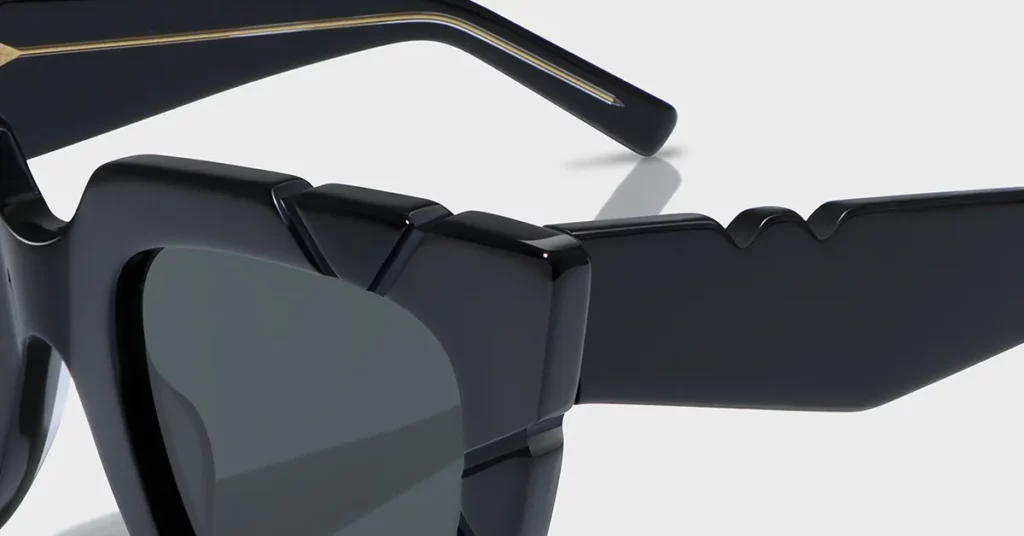
Go-to-Market Strategy: Translating Sourcing into ROI
Your sourcing decisions are wasted if they don’t translate into brand equity and profit. A powerful brand narrative, built on verifiable claims, is what turns a higher material cost into a premium price point your customers are willing to pay.
Lessons from Pioneers: Mykita, Pala, and Stella McCartney
Look at the brands that do this well. MYKITA’s complete pivot to Acetate Renew provides an unshakeable foundation for their sustainability story. Pala Eyewear integrates bio-acetate with social impact programs, creating a holistic narrative. Stella McCartney proves that sustainable materials can and do belong in the highest tiers of luxury.
Best Practice: Build a holistic impact story. Integrate your frame material choices with sustainable packaging, carbon offset programs, and end-of-life take-back initiatives. This demonstrates a comprehensive commitment that is far more powerful than a single material claim.
Calculating the True ROI of Sustainability
The return on your investment extends far beyond the direct margin on a frame. A comprehensive ROI calculation must factor in:
- Brand Loyalty: Sustainable brands see higher customer retention and lifetime value.
- PR Value: Authentic sustainability stories generate valuable earned media.
- Market Access: Opens doors to eco-conscious retailers and new customer segments.
- Future-Proofing: Positions your brand to thrive amidst increasing environmental regulation and consumer scrutiny.
The Bottom Line: Brands that delay sustainability adoption will face rising catch-up costs, reduced supplier access, and a significant competitive disadvantage. Investing now is not just about doing good; it’s about sound, long-term business strategy.
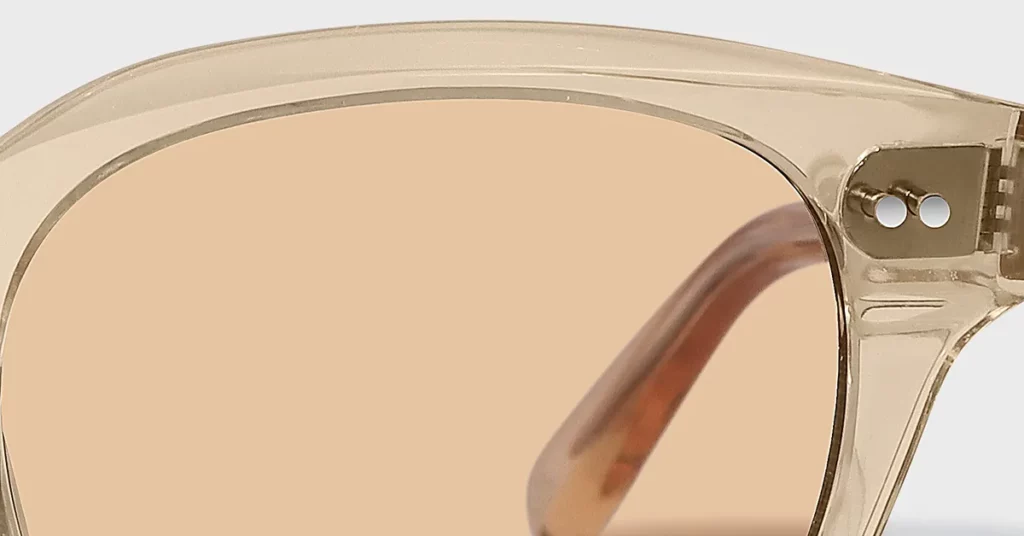
Conclusion
Mastering the sourcing of certified recycled and bio-acetate is a formidable challenge, but it offers a direct path to competitive differentiation. Success requires a strategic command of material science, certification protocols, and supply chain economics. By building partnerships with expert manufacturers who have this mastery, you can transform your brand’s sustainable ambitions into market-leading products that justify their premium, build unshakeable brand loyalty, and secure your position for the future.
Frequently Asked Questions
1. What is the practical difference in durability between Eastman’s Acetate Renew and Mazzucchelli’s M49?
Both materials are engineered to deliver durability and performance identical to traditional premium acetate. Your customers will not feel a difference in weight, strength, or finish. The choice is about the sustainability story you want to tell: circularity vs. renewability.
2. Under the ISCC PLUS mass balance model, what is the minimum certified content I can expect?
Final products typically contain between 25-40% certified sustainable content. You must message this transparently by stating the exact percentage and the certification method, for example: “Made with 27% ISCC PLUS certified recycled content via a mass balance approach.”
3. Are certain colors or finishes harder to achieve with certified recycled acetate?
No. Modern molecular recycling technology produces a material with the same purity as virgin acetate. This means there are no restrictions on color palettes or finishes; you can achieve the same vibrant colors and high-gloss polishes as you can with conventional materials.
4. How do manufacturers prevent shrinkage or warping with sustainable acetates?
Expert manufacturers use enhanced quality controls, including precise temperature management during processing, extended curing and stabilization times, and batch-specific parameter optimization. They also use advanced inspection protocols to ensure every frame meets strict dimensional stability standards.
5. What other sunglass components can be sourced sustainably?
To build a truly sustainable product, you can source recycled stainless steel for hinges, bio-based polymers for temple cores, and lenses made from recycled nylon or plant-based materials. This holistic approach strengthens your brand’s eco-credentials across the entire product.

